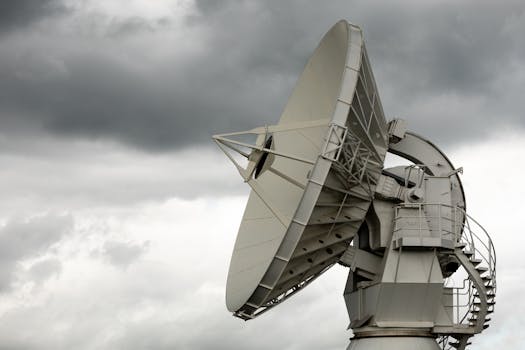GEO Satellites: Unlocking the Power of Geostationary Orbit
GEO satellites are a crucial part of modern satellite technology, providing a wide range of services including telecommunications, weather forecasting, and navigation. In this article, we will delve into the world of GEO satellites, exploring their history, functionality, and applications.

GEO Satellites: Unlocking the Power of Geostationary Orbit
GEO satellites, or geostationary satellites, are a type of satellite that orbits the Earth at an altitude of approximately 36,000 kilometers, allowing them to remain stationary relative to a fixed point on the equator. This unique characteristic enables GEO satellites to provide continuous coverage of a specific region, making them ideal for a variety of applications. GEO satellites have been in use for decades, with the first GEO satellite, Syncom 2, launched in 1963. Since then, the technology has evolved significantly, with modern GEO satellites offering a wide range of services including telecommunications, weather forecasting, and navigation.
One of the primary advantages of GEO satellites is their ability to provide continuous coverage of a specific region. This is achieved through the use of a geostationary orbit, which allows the satellite to remain stationary relative to a fixed point on the equator. This means that a GEO satellite can provide uninterrupted services to a specific region, making them ideal for applications such as telecommunications and television broadcasting. Additionally, GEO satellites can be used to provide backup services in the event of a failure or disruption to other satellite systems.
Functionality and Applications
GEO satellites are used for a variety of applications, including telecommunications, weather forecasting, and navigation. In the field of telecommunications, GEO satellites are used to provide telephone, internet, and television services to remote and underserved areas. They are also used to provide backup services in the event of a failure or disruption to other satellite systems. In the field of weather forecasting, GEO satellites are used to provide high-resolution images of the Earth’s weather patterns, allowing for more accurate forecasting and warning systems. Additionally, GEO satellites are used in navigation systems, such as GPS, to provide location information and timing signals.
GEO satellites are also used for a variety of scientific and research applications, including Earth observation, space weather monitoring, and astronomy. Earth observation satellites use high-resolution cameras and sensors to monitor the Earth’s surface, providing valuable data on climate change, deforestation, and natural disasters. Space weather monitoring satellites use sensors and cameras to monitor the Sun’s activity and the Earth’s magnetic field, providing valuable data on space weather events. Astronomy satellites use telescopes and sensors to study the universe, providing valuable data on the formation and evolution of galaxies and stars.
Challenges and Limitations
Despite the many advantages of GEO satellites, there are also several challenges and limitations to their use. One of the primary challenges is the high cost of launching and maintaining a GEO satellite. The cost of launching a GEO satellite can be tens of millions of dollars, and the cost of maintaining the satellite over its lifetime can be hundreds of millions of dollars. Additionally, GEO satellites are subject to a variety of environmental factors, including radiation, extreme temperatures, and orbital debris. These factors can cause damage to the satellite’s components and reduce its lifespan.
Another challenge facing GEO satellites is the limited availability of orbital slots. The geostationary orbit is a limited resource, and the number of available orbital slots is finite. This means that there is a high demand for orbital slots, and the allocation of slots is tightly regulated by international authorities. Additionally, the use of GEO satellites is subject to a variety of regulatory requirements, including licensing and frequency allocation. These requirements can be complex and time-consuming, and can add to the cost and complexity of using a GEO satellite.
Future Developments and Advancements
Despite the challenges and limitations facing GEO satellites, there are also many future developments and advancements on the horizon. One of the most significant developments is the use of new technologies, such as advanced materials and propulsion systems. These technologies are expected to improve the performance and efficiency of GEO satellites, allowing them to provide more services and operate for longer periods of time. Additionally, the use of new technologies is expected to reduce the cost of launching and maintaining a GEO satellite, making them more accessible to a wider range of users.
Another significant development is the use of small satellites, also known as smallsats. Smallsats are smaller and less expensive than traditional GEO satellites, and can be launched and operated at a fraction of the cost. They are also more flexible and can be used for a variety of applications, including Earth observation, communications, and navigation. The use of smallsats is expected to increase in the coming years, and is likely to have a significant impact on the satellite industry.

